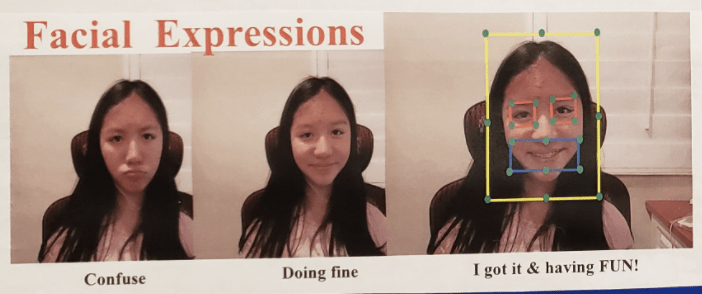
By: Beverlyn T.
Year: 2020
School: Beacon Park School, 8th grade
Division: Junior
Advisor: Ms. Cassese
I utilized AIs’ facial recognition technology to improve the traditional teaching flow process into a more efficient way.
The weakness of the traditional in-class lecture is hard to identify a student’s learning difficulty real-time. My design is to provide fast feedback to the instructor whether the students fully understand the lecture before they receive disappointing grades.
My solution combines Raspberry Pi and Google AI technology. All the hardware automation controlled by my programs done in Python. First, I used Raspberry Pi camera to capture a student’s facial expression continuously during the lecture.
Then, each image was analyzed by Google AI to obtain a joy score. My Python program applied RegEx (Regular Expression) to extract data, reformat, and computer the SMA (SimpleMoving Average of 10) to predict the trend.
To test whether my facial recognition analysis works, a student’s facial expressions were captured and analyzed while two lectures with different teaching styles were offered. The two set of experimental data showed the student has a very different understanding level on these two lectures. In order to have a better user interface for the instructor, I used MIT App Inventor to create an app to provide the animated learning feedback after the facial expression analysis data were acquired. This app serves as an efficient user interface for the instructor to understand the student’s learning progress.
My science project proves that the concept of AI facial recognition technology can play an important role in education. It can identify the challenging moment of the students as early as possible, and then let the instructor supplement with more explanations/examples before moving to the next subject. My design serves as a feedback bridge between the instructor and the students to enhance the teaching/learning efficiency.

